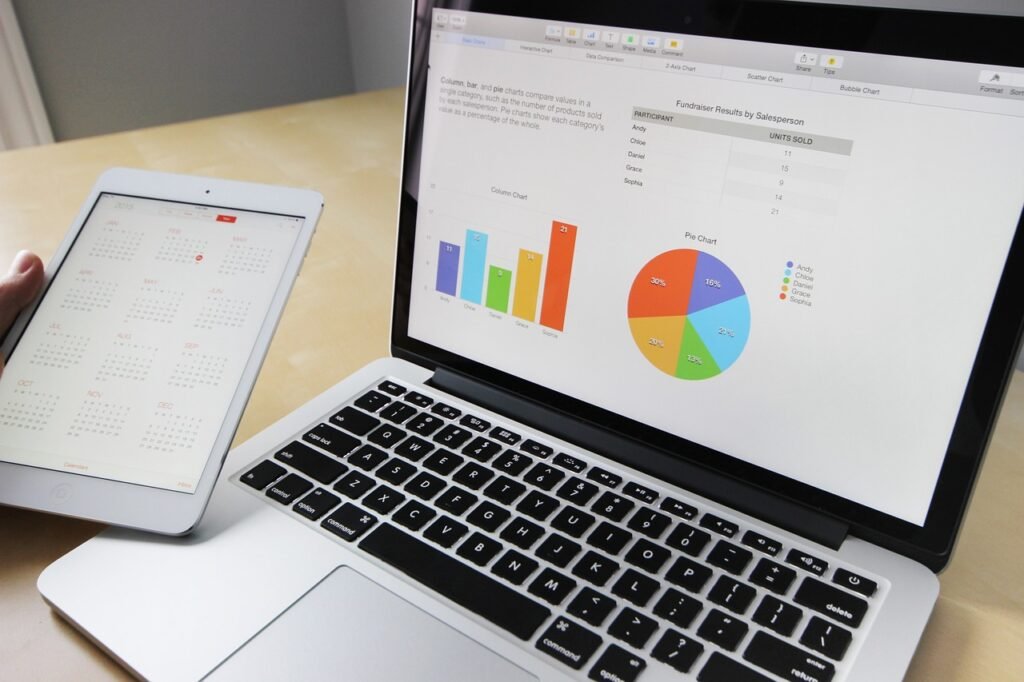In the dynamic world of digital advertising, creativity isn’t just an asset—it’s a necessity. From eye-catching graphics to intuitive layouts, the quality of ad design can make or break a campaign. But even the most talented designers rely on powerful tools to transform their ideas into compelling advertisements. These tools not only streamline the design process but also enhance creativity, bringing a unique flair to each campaign.
In this guide, we’re diving deep into the 17 top ad creative tools that every advertiser should consider. Whether you’re a seasoned design professional or a newbie exploring the waters, these tools cater to all skill levels, objectives, and budgets. So, let’s embark on this journey of discovery and unleash the potential of creative designs in your advertising campaigns.
Factors to Consider When Choosing Ad Creative Tools
Before we plunge into our curated list of tools, let’s address an essential question: what makes an ad creative tool stand out?
A. Ease of Use
A user-friendly interface ensures that designers, regardless of their expertise level, can navigate the tool with ease. Look for intuitive dashboards, drag-and-drop features, and quick-access toolbars.
B. Versatility and Feature Set
The tool’s capability to handle a myriad of design tasks—from basic editing to advanced graphic creation—is invaluable. Features like pre-set templates, custom fonts, and diverse color palettes enhance versatility.
C. Integration Capabilities
In today’s interconnected digital ecosystem, your design tool should seamlessly integrate with other marketing platforms, be it social media schedulers or email marketing software.
D. Cost and Budget Considerations
While many tools offer free versions, their premium counterparts usually come packed with advanced features. Determine your budgetary constraints and assess the value each tool offers in terms of its pricing.
E. Scalability and Future-proofing
As your business grows, so will your design needs. Opt for tools that cater to evolving requirements, be it larger teams, more projects, or advanced design techniques.

Related: Check out our free SEO suite

In-depth Look at the 17 Best Ad Creative Tools
Delving into each tool, we’ll discuss their defining characteristics, pricing, and who they’re best suited for. This will empower you to make informed decisions tailored to your specific requirements.
Adobe Creative Cloud
Overview
Adobe Creative Cloud encompasses a suite of tools catering to various design and multimedia needs, standing as an industry standard in the creative world.
Key Features
- Comprehensive suite including Photoshop, Illustrator, Premiere Pro, and more
- Cloud integration for seamless design across devices
- Regular updates with new features and tools
Pricing
Subscription-based model starting from $20.99/month for individual tools to $52.99/month for the entire collection.
Pros and Cons
Pros:
- Versatile range of professional-grade tools
- Cloud storage and accessibility across devices
- Regular feature updates and additions
Cons:
- Can be expensive for individuals or small businesses
- Steep learning curve for certain tools
USPs
- Industry-standard software for multiple design disciplines
- Integrated workflows between different Adobe applications
Ideal User Base
Professionals in the design, video editing, and multimedia sectors. Also suitable for large businesses and agencies requiring a comprehensive tool suite.
Canva
Overview
Canva offers an intuitive drag-and-drop interface, enabling users to create designs for various platforms without needing professional expertise.
Key Features
- Extensive template library for various formats
- Collaborative features for team designs
- Built-in stock photo and element library
Pricing
Offers a free version. Canva Pro, with advanced features, is priced at $9.95/user/month when paid annually.
Pros and Cons
Pros:
- User-friendly interface
- Vast array of pre-designed templates
- Regularly updated design elements and features
Cons:
- Limited advanced design capabilities compared to professional software
- Certain stock photos and elements require additional payment
USPs
- Quick and intuitive design creation
- Extensive resources for non-designers to produce professional-quality work
Ideal User Base
Bloggers, small to medium businesses, social media marketers, and non-designers seeking easy design solutions.
RelayThat
Overview
RelayThat automates design across multiple channels, simplifying ad creation while preserving brand consistency.
Key Features
- Automated design for various platforms and dimensions
- Brand asset management
- SEO optimization for images
Pricing
Starting at $25/month, offering unlimited designs and brand workspaces.
Pros and Cons
Pros:
- Multi-platform design made easy
- Ensures brand consistency
- Extensive asset library
Cons:
- Limited customization for certain templates
- Might not suit individual or small brand needs
USPs
- Unique automation streamlining multi-platform design
- Brand management ensuring consistent visuals across campaigns
Ideal User Base
Medium to large businesses and marketers emphasizing brand consistency across various advertising platforms.
Sketch
Overview
Sketch is a vector-based design tool primarily used for user interfaces and user experience design for websites and mobile apps.
Key Features
- Vector-based design allows scalability
- Symbol system for consistent designs
- Plugins to enhance functionality
Pricing
Priced at $99/year per device, including regular updates.
Pros and Cons
Pros:
- Intuitive interface for UI/UX design
- Extensive plugin ecosystem
- Cloud collaboration for team projects
Cons:
- Exclusively available for macOS
- Limited to screen design, not comprehensive graphic design
USPs
- Specialized for digital UI/UX design
- Seamless integration with prototyping tools
Ideal User Base
UI/UX designers, mobile app developers, and web designers working on macOS platforms.
GIMP (GNU Image Manipulation Program)
Overview
A free, open-source alternative to Photoshop, GIMP offers a broad spectrum of image manipulation features.
Key Features
- Customizable interface
- Extensive file format compatibility
- Wide array of editing tools similar to Photoshop
Pricing
Completely free.
Pros and Cons
Pros:
- No cost involved
- Open-source with a supportive community
- Versatile for various design needs
Cons:
- A steeper learning curve for beginners
- Some advanced features in premium software might be missing
USPs
- High-quality open-source image manipulation
- Extensive customization potential with plugins
Ideal User Base
Designers, illustrators, and photo editors looking for a budget-friendly alternative to Photoshop.
Affinity Designer
Overview
Affinity Designer is a graphic design software developed as a cheaper, yet robust alternative to Adobe’s suite.
Key Features
- Real-time performance and preview
- Pan and zoom at 60fps
- Vector and raster design capabilities
Pricing
One-time purchase at $49.99, with no subscription fees.
Pros and Cons
Pros:
- Affordable with no monthly fees
- Smooth performance even on larger designs
- Intuitive interface for professionals and beginners
Cons:
- Lacks some of Adobe’s advanced functionalities
- Smaller online community compared to Adobe, meaning fewer tutorials
USPs
- High-performance graphic design at a fraction of Adobe’s cost
- Simultaneous vector and raster editing
Ideal User Base
Graphic designers, illustrators, and businesses looking for cost-effective design software without monthly subscriptions.
InVision
Overview
InVision is a prototyping tool that allows designers to create interactive mockups for their designs, making client presentations and team feedback more dynamic.
Key Features
- Interactive and animated prototypes
- Real-time collaboration and feedback
- Seamless transition from design to prototype
Pricing
Offers a free plan for one prototype. The Pro plan starts at $15 per month.
Pros and Cons
Pros:
- Easily showcase design interactivity
- Tight integration with design tools like Sketch
- Real-time feedback streamlines the revision process
Cons:
- Limited to prototyping; not a full-fledged design tool
- Higher plans can get expensive for large teams
USPs
- Turn static designs into interactive prototypes
- Simplifies the feedback process with real-time collaboration
Ideal User Base
UI/UX designers, agencies presenting to clients, and teams working on product designs that require feedback loops.
CorelDRAW
Overview
CorelDRAW is a vector graphics editor that has been a staple in the design community for decades, known for its robust features and reliability.
Key Features
- Vector illustration and layout
- Bitmap-to-vector tracing
- Extensive font management and filtering
Pricing
One-time purchase option at $499 or a subscription model at $198 per year.
Pros and Cons
Pros:
- Comprehensive toolkit for vector design
- Reliable performance with regular updates
- Built-in tools for print design and output
Cons:
- Learning curve can be steep for beginners
- Pricier than some modern alternatives
USPs
- Deep history and reputation in the design industry
- Comprehensive suite for graphics, layout, and photo editing
Ideal User Base
Professional graphic designers, businesses requiring in-house design tools, and industries involved in print and publication.
PicMonkey
Overview
PicMonkey serves as an online design and photo editing tool, simplifying design tasks for social media, branding, and more.
Key Features
- Drag-and-drop design tools
- Photo editor with touch-up tools
- Customizable templates
Pricing
Offers a basic free version. Premium plans start at $7.99 per month.
Pros and Cons
Pros:
- Easy to use, especially for beginners
- Designed for quick edits and designs
- Regularly updated template library
Cons:
- Limited advanced editing capabilities
- Some features behind a paywall, even with basic paid plans
USPs
- Streamlined design tasks with intuitive interface
- Quick photo editing and touch-ups with minimal effort
Ideal User Base
Bloggers, social media influencers, small businesses, and non-designers looking for quick design solutions.
Bannersnack
Overview
Bannersnack is specifically tailored for designing online banners. It’s perfect for marketers and businesses looking to craft compelling banner ads with ease.
Key Features
- Banner generator with ready-made templates
- Create animated or static banners
- Directly publish to advertising platforms
Pricing
Offers a limited free version. Premium plans start from $7 per month.
Pros and Cons
Pros:
- Specialized tool for banner creation
- Intuitive design features for non-professionals
- Extensive library of stock images and templates
Cons:
- Limited to banner design capabilities
- Higher-end plans required for full feature access
USPs
- Streamlined process for banner ad creation
- Direct publishing options to major ad platforms
Ideal User Base
Digital marketers, online advertisers, and small to medium businesses focusing on online advertising campaigns.
Crello
Overview
Crello is a graphic design tool that simplifies the creation process for visuals, especially for social media and digital platforms.
Key Features
- Over 25,000 templates for various formats
- Animated designs for social media
- Customizable design elements
Pricing
Free version available with basic features. Pro version priced at $7.99 per month.
Pros and Cons
Pros:
- Expansive template collection
- User-friendly with drag-and-drop functionality
- Supports animated designs
Cons:
- Less advanced features compared to professional software
- Premium designs and assets behind a paywall
USPs
- Quick design creation with vast template choices
- Specially crafted animated designs for social platforms
Ideal User Base
Content creators, social media marketers, and businesses seeking fast design solutions for digital platforms.
Over
Overview
Over aims at empowering brands and businesses to stand out in the digital space through easy-to-use mobile and desktop design tools.
Key Features
- Streamlined design tools for mobile
- Collaborative features for team projects
- Rich library of graphics, fonts, and templates
Pricing
Offers a free version with in-app purchases for advanced features. Pro version is priced at $14.99 per month.
Pros and Cons
Pros:
- Mobile-first approach for on-the-go design
- Suitable for quick edits and template-based designs
- Regularly updated design assets
Cons:
- More advanced features require a subscription
- Might not be as robust as full-fledged desktop applications
USPs
- Design anytime, anywhere with a strong mobile interface
- Tailored for quick, professional-grade design tasks
Ideal User Base
Social media influencers, mobile content creators, and businesses looking for efficient mobile design tools.
Placeit
Overview
Placeit specializes in providing mockups and templates for various design assets, from apparel to digital device screens.
Key Features
- Massive collection of mockups across categories
- Logo and design templates available
- Video templates for promotions and ads
Pricing
Starting at $14.95 per month with access to all mockups, designs, and videos.
Pros and Cons
Pros:
- Huge range of real-world mockups
- Quick design solutions without software
- Suitable for branding and logo creation
Cons:
- Can become expensive for occasional users
- Limited customization in some templates
USPs
- One-stop-shop for diverse mockup needs
- Easily bring designs to life in real-world scenarios
Ideal User Base
Startups, e-commerce businesses, designers needing rapid mockup solutions, and branding agencies.
Venngage
Overview
Venngage is an infographic maker with an easy-to-use design platform, perfect for transforming data into engaging visuals.
Key Features
- Extensive infographic templates
- Customizable charts and icons
- Business branding options
Pricing
Free version available with basic templates. Premium plans start at $19 per month.
Pros and Cons
Pros:
- Specializes in infographics and data visuals
- User-friendly interface
- Diverse template styles to suit various topics
Cons:
- Free version exports come with a watermark
- Advanced design features require higher-tier plans
USPs
- Transforms data into engaging visuals effortlessly
- Diverse design assets for varied infographic styles
Ideal User Base
Content marketers, educators, businesses looking to present data visually, and bloggers.
Blender
Overview
While primarily a 3D modeling and animation software, Blender boasts features that can be used for creative ad design, especially for high-quality renders and animations.
Key Features
- Comprehensive 3D modeling tools
- Animation and rigging capabilities
- Real-time rendering engine (Eevee)
Pricing
Completely free and open-source.
Pros and Cons
Pros:
- Professional-grade 3D tools at no cost
- Active community with constant updates
- Flexible and customizable
Cons:
- Steep learning curve for beginners
- Requires a powerful system for complex projects
USPs
- High-quality 3D modeling and animation for free
- Versatile with a range of applications, from VFX to ad design
Ideal User Base
3D artists, animators, ad agencies needing 3D content, and indie filmmakers.
Insights into Selecting the Right Tool
The array of ad creative tools available is vast. To narrow down your choices, consider the following factors:
1. Determine Your Primary Needs
Before diving into any software, assess what you primarily need. Are you crafting social media visuals, creating intricate illustrations, or focusing on interactive ad campaigns?
2. Consider Your Skill Level
Some tools come with steep learning curves, suitable for professionals, while others cater to beginners. Match the tool’s complexity with your expertise.
3. Collaborative Needs
If you’re part of a team, consider tools that offer collaborative features, allowing multiple stakeholders to provide input seamlessly.
4. Budget Constraints
While some tools come with monthly subscriptions, others offer one-time payments or even free versions. Your budget can significantly influence your choice.
5. Integration and Compatibility
Ensure the tool integrates well with other software you use or platforms you aim to design for. For instance, if you’re creating ads for a specific social media site, the design tool should ideally have preset dimensions for that platform.
Ad Design Best Practices
Regardless of the tool you choose, adhering to some universal design best practices can elevate your ad campaigns:
1. Maintain Brand Consistency
Your ads should echo your brand’s voice, colors, and overall persona. Consistency builds trust and enhances brand recall.
2. Use High-Quality Images
Blurry or pixelated visuals can deter potential customers. Prioritize quality to make your ads stand out.
3. Aim for Simplicity
An ad cluttered with too many elements can be distracting. Keep your message straightforward and clear.
4. Call-to-Action (CTA) is Key
Your CTA should be compelling and visible, driving the audience to take the desired action.
5. Test and Iterate
Ad campaigns benefit from A/B testing. Use variations to gauge which design or message resonates best with your audience.
Conclusion
Navigating the world of ad creative tools can be overwhelming. However, armed with knowledge and clarity about your needs, you can harness the power of these tools to craft compelling campaigns. Remember, while the right software can enhance your design process, the underlying strategy and message play pivotal roles in an ad’s success. Invest time in understanding your audience, keep iterating based on feedback, and watch your campaigns soar to new heights.
Read Next:
- Impact of Predictive Analytics on Sales Forecasting: A Deep Dive!
- E-commerce SEO: The Complete Guide
- 15 Best AI Marketing Tools to Elevate Your Business Growth
- Crafting a Mobile App Development Agreement: An International Perspective
- How to use Leadpages: An Explainer





















Comments are closed.